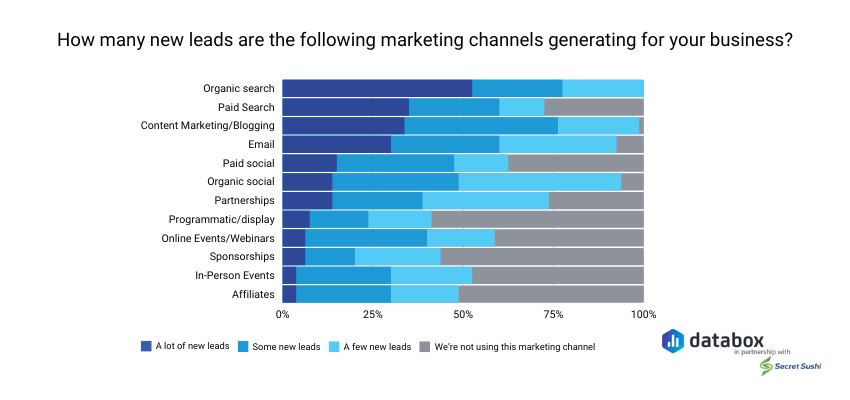Conversion Rate Optimization (CRO) is one of the top goals for B2B marketers. Why? A significant reason is that improving CRO creates a beneficial ripple effect. It can lower customer acquisition costs by getting more ROI from existing visitors and users. Like a rising tide, when CRO goes up, it can influence other metrics and lead to higher revenue per visitor and more customers.
CRO is the art and science of making your website more effective at converting visitors into customers. Even for relatively simple business models, this process has many variables. It can feel overwhelming to keep track of everything, and even the most seasoned marketers fall prey to the top mistakes in B2B lead generation CRO. Helping simplify the overwhelm is where Funnel Envy can help.
The critical thing to remember is that it’s not just about driving traffic to your website; it’s about converting that traffic into meaningful leads. The overall goal is to understand your audience, tailor your digital marketing experiences to their needs, and continually adjust your strategies based on data-driven insights.
There is so much data to track in digital marketing, especially now with the release of a new AI tool almost weekly. Improving your conversion rate is a moving target.
Where to start? It depends on your business, of course. Organic search is most likely job 1. If budgets are tight, a synergistic combination of organic and smart blogging is an excellent place to start.
You can use this chart from Databox to give you an overview of ideas on where to put your efforts.

Let’s look at some common mistakes, plus ways to fix them.
Audience, First and Always
The success of any lead generation strategy hinges on a deep understanding of the audience. Here are two common marketing mistakes related to audience targeting in B2B lead generation:
Not Defining Your Target Audience
Many B2B marketing strategies falter due to a need for more specific targeting. Not knowing who you are trying to reach with your content marketing, social media, and other efforts can lead to inefficiencies and wasted resources.
A well-defined audience is the foundation upon which marketers build successful lead-generation strategies. Defining the audience requires understanding demographics and your customer avatars’ unique challenges, interests, and behaviors.
Forgetting the Buyer’s Journey
Another frequent oversight is neglecting to factor in the buyer’s journey. The customer journey has multiple stages, from the initial awareness of a problem to the consideration of various solutions and the decision to purchase. Each phase requires different marketing approaches and content types.
For example, blog posts might be effective in the awareness stage, while detailed case studies and product demos are more suitable for the decision stage. Webinars can nudge prospects into decision mode, too.
Aligning your content and strategies with the buyer’s mindset ensures that your efforts resonate with prospects at the right time and in the right way.
Failing to Optimize Your Website
Think of optimizing your website like a lever effect – a well-optimized website can simultaneously knock out several lead-generation mistakes. Search engine optimization is the essential starting point.
Here are some other common pitfalls:
Focusing Too Much on Quantity Over Quality
One of the more common lead generation mistakes is that more leads always equal better results. However, the quality of leads is often more important than quantity. You want to optimize your website to attract, filter, and convert people with genuine interest and need for your product or service.
Poorly Designed Landing Pages
Landing pages play a vital role in converting visitors into leads. However, many B2B websites suffer from poorly designed landing pages. Poorly designed pages have unclear calls to action, lack relevant information, and are visually confusing.
Optimizing your lead capture forms and content to appeal to your ideal customer profile is essential to attracting quality leads. Well-designed forms increase the chances of conversion and ensure better alignment between your marketing campaigns and sales efforts.
A well-designed landing page should be clear, concise, and compelling. It should provide visitors with exactly what they are looking for and guide them smoothly toward the desired action, whether filling out a form or signing up for a webinar.
Lack of Clear Goals and KPIs
Setting clear goals and Key Performance Indicators (KPIs) is essential for any successful lead-generation strategy. Goals guide your efforts and help you focus on what’s critical, and KPIs allow you to measure the effectiveness of your strategy.
Common KPIs in B2B lead generation include conversion rates, click-through rates, and the cost per lead. Without these, it’s difficult to gauge the success of your campaigns and make informed decisions about where to allocate your resources for improving results.
Ignoring Data and A/B Testing
Data and testing are at the heart of effective CRO, yet it can be hard to know where to start. Here are some tips:
Testing Without a Strategy
Random testing must have a clear strategy to avoid confusion and misinterpreting results. Each test should be designed with a specific goal, whether to improve the click-through rate on a call-to-action button or increase the number of form submissions.
A strategic approach to testing ensures that you are always learning and improving your lead-generation efforts.
Pro-tip: Test Pages That Are Doing Well
While fixing broken pages is crucial, the low-hanging fruit is improving pages that are performing well. Regularly testing and optimizing all pages, including the high-performing ones, ensures you maximize your lead generation potential.
Multiple Landing Pages: The More the Merrier
Hubspot reports that business websites with 10-15 landing pages increase conversions by 55% over those with less than 10 landing pages. And that’s not all. Increasing to over 40 landing pages improved results by an eye-popping 500%.
So, obviously, multiple landing pages can lead to a dramatic improvement in performance. That doesn’t mean it’s an easy fix. The more pages, the more complex tracking and reporting will be. If you have questions about how to scale your landing page program, we can help.
Not Using Social Media Effectively
With appropriate strategies and implementation, social media is a powerful tool in the B2B marketer’s toolkit. Effective use of social media in B2B lead generation involves more than just posting regular updates.
Like your website content, social content requires a strategic approach, with content tailored to the platform and the audience. LinkedIn is the go-to platform for B2B marketers, offering opportunities for targeted networking, content sharing, and ad campaigns.
TikTok, which started as a trendy haven for GenZ self-expression, now has a rapidly growing B2B sector. Podcasts and YouTube are still the most powerful channels for teaching and trust-building. If your blog strategy is already solid, the next step could be to experiment with augmenting high-performing copy with podcast or video content.
Moving Ahead to Avoid Top Mistakes in B2B Lead Generation CRO
When designing or optimizing complex processes, workflows, or SOPs, a simplified place to start is to be aware of typical mistakes and take preventive action. From optimizing your website’s user experience to fine-tuning your social strategy, optimizing CRO involves constant learning and testing.
AI tools will continue to up the ante for marketing performance. With the right approach and focus on critical areas, you can avoid common pitfalls and drive successful outcomes for your business. At Funnel Envy, we have the expertise and tools to help you dial in your website and landing page performance to increase CRO. Reach out today. We’re here to help.






